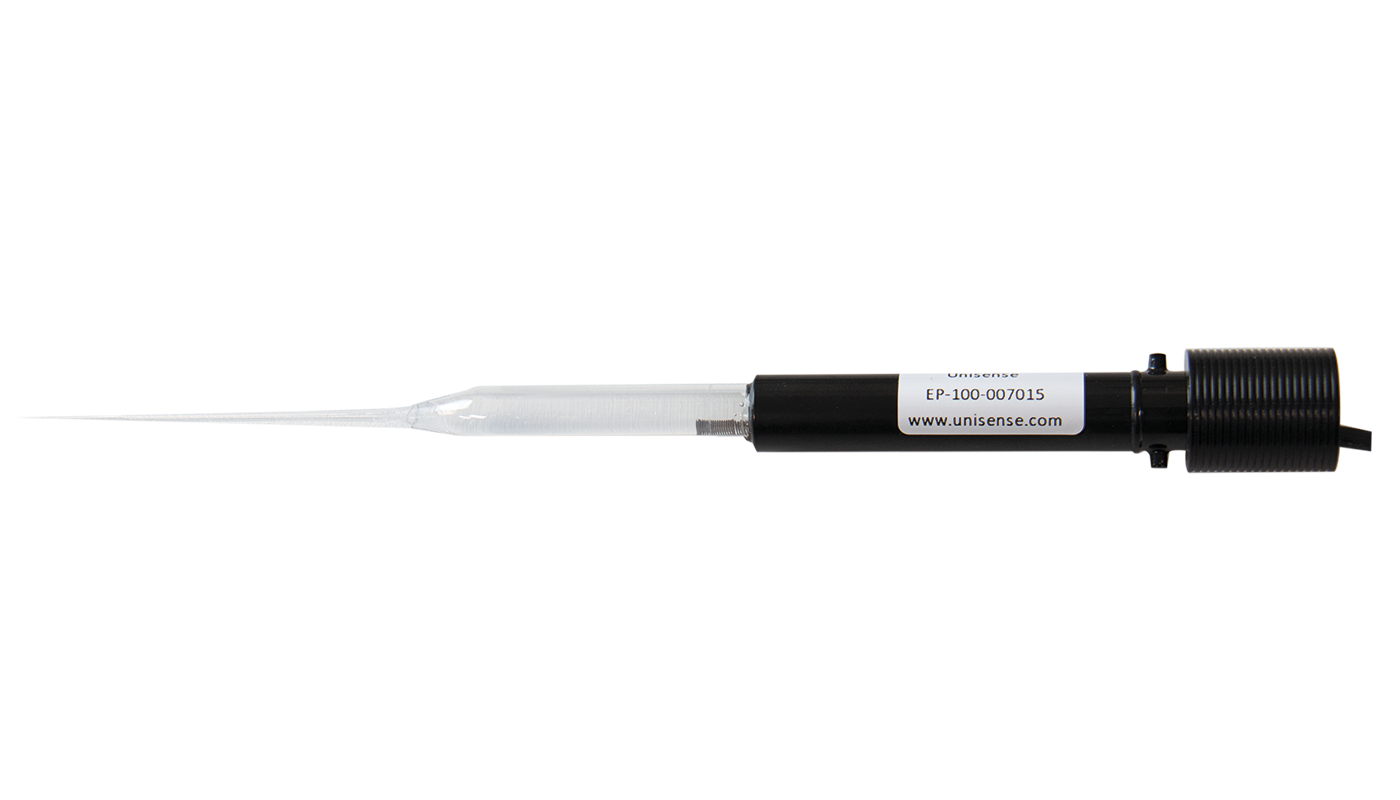
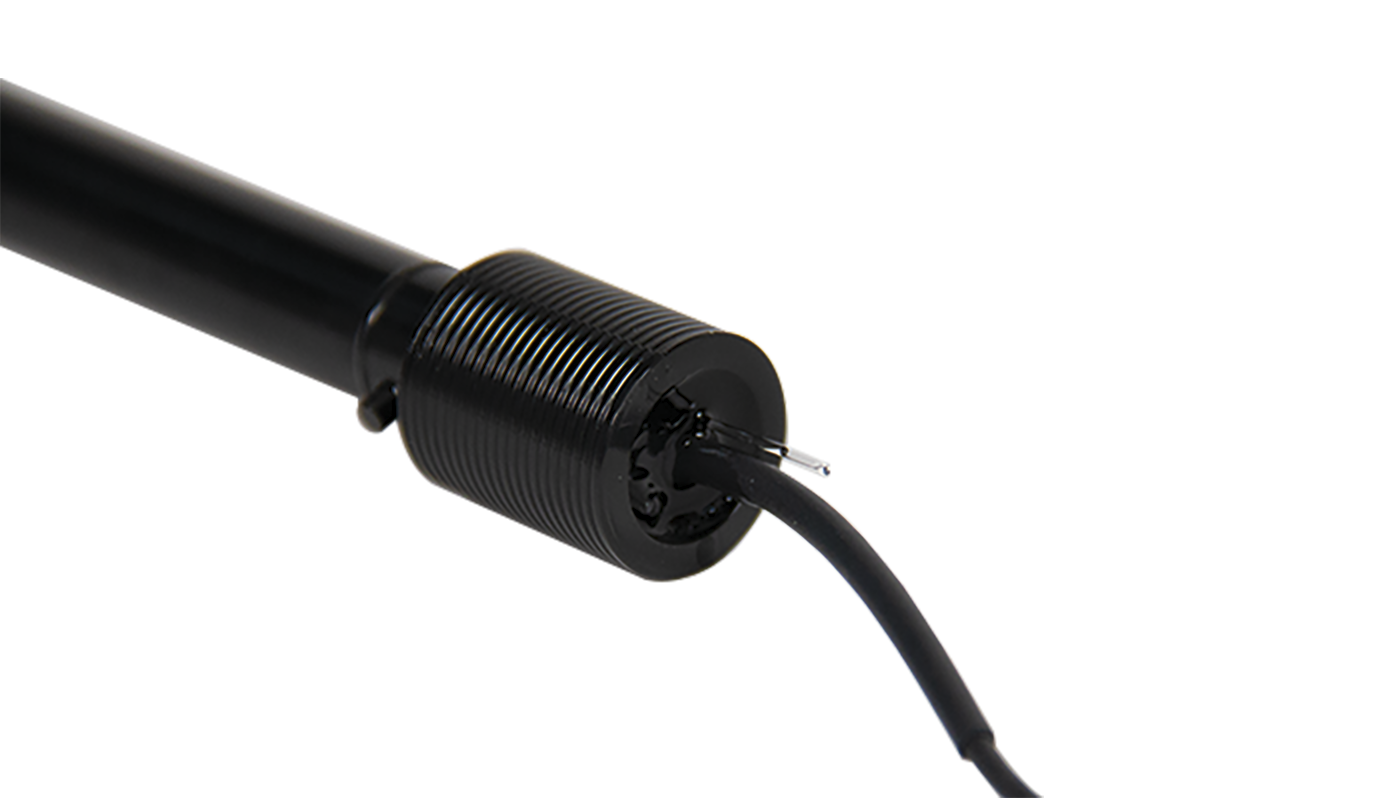
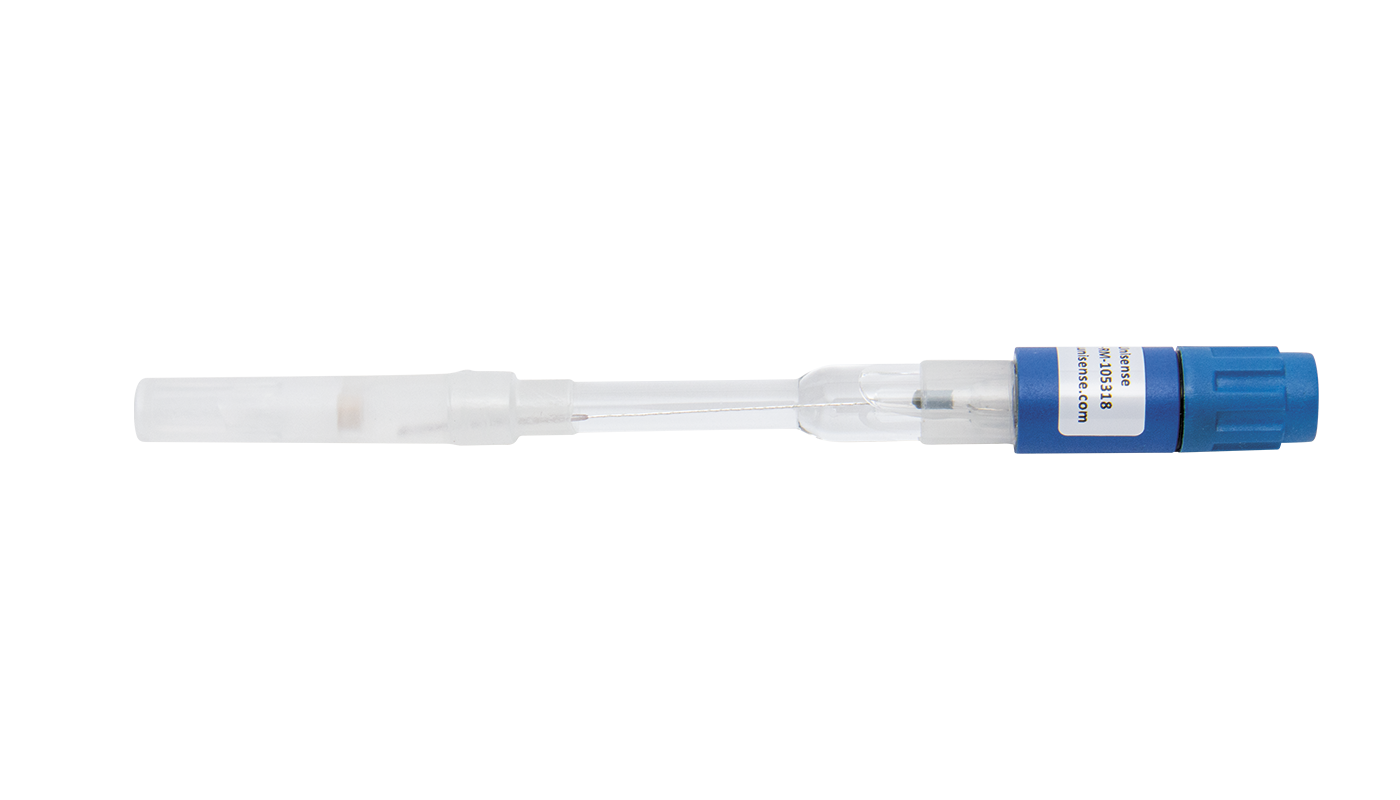
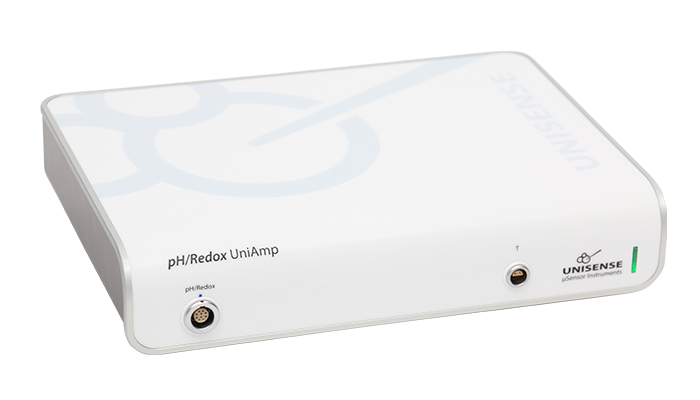
Electric Potential Microelectrode
With the Electric Potential Microelectrode, you can measure gradients in electric potential with very high spatial resolution thanks to the fast response and a tip diameter of 100 µm. Read more...
Quantify minute differences in electric potential
The Electric Potential microelectrode was originally invented for measuring extremely small gradients in electric potential in sediments (Damgaard et al., 2014). However, it can be used in any application for quantifying minute differences in electric potential in microscale and over large distances.
The Electric Potential microelectrode measures the difference in electric potential between the tip of the Electric Potential microelectrode and the reference electrode. The principle is identical to the originally published microelectrode (Damgaard et al., 2014), and the design has been slightly modified for safe shipping. The microelectrode does not require calibration. You only need to zero the signal under measurement conditions.
The signal is shielded very effectively against electrical noise, making it possible to resolve differences in electric potential of a fraction of a mV. The microelectrode may be used at salinities between freshwater and full ocean seawater.
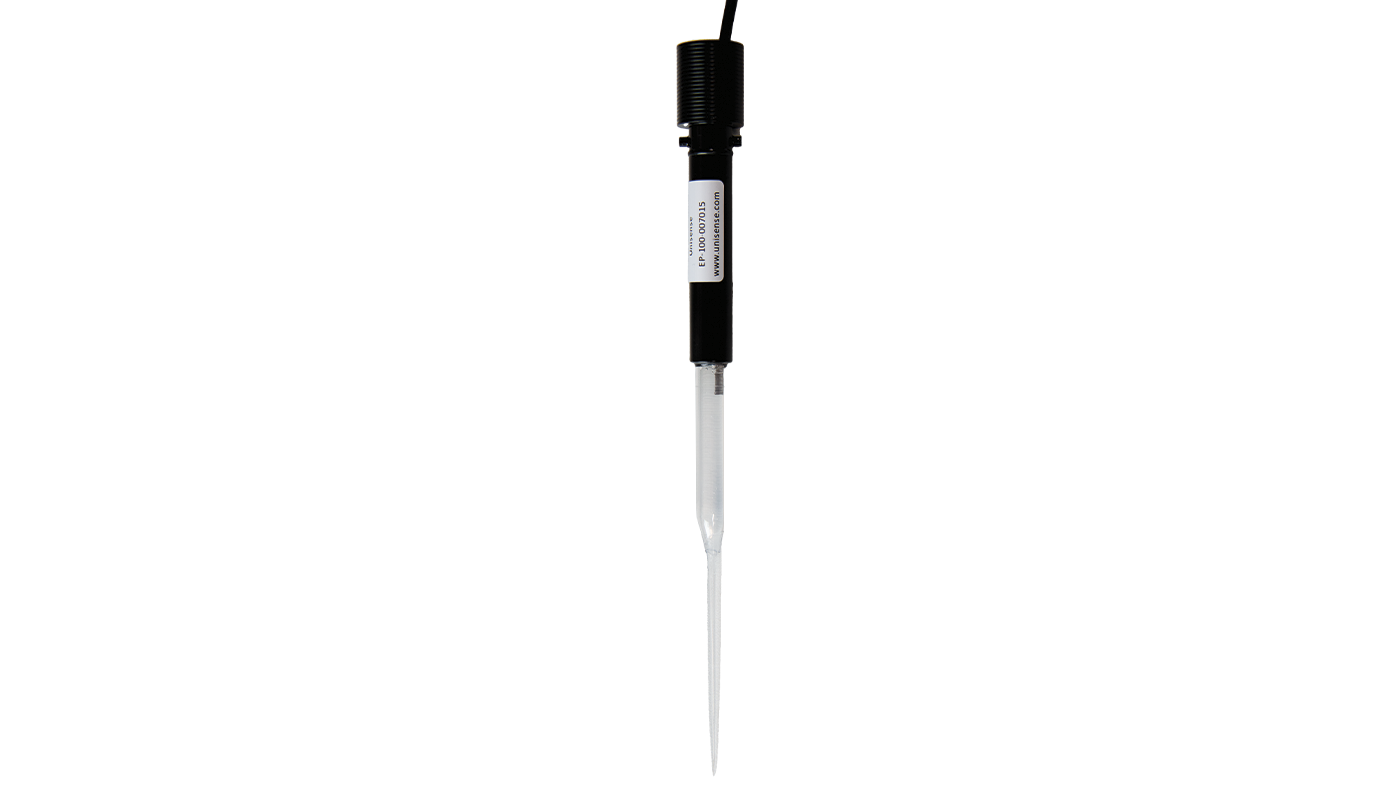
| Feature | Standard | Options | Extra price for option selection |
|---|---|---|---|
|
Feature
Total length
|
Standard
150-200 mm
|
Options
70-350 mm
|
Extra price for option selection
20-50%
|
|
Feature
Diameter 20 mm from tip
|
Standard
<2 mm
|
Options
<1 mm
|
Extra price for option selection
10%
|
|
Feature
Diameter 50 mm from tip
|
Standard
8 mm
|
Options
<2 mm
|
Extra price for option selection
20%
|
|
Feature
Glass shaft diameter
|
Standard
8 mm
|
||
|
Feature
Plastic shaft protection diameter*
|
Standard
11 mm
|
Options
Can be omitted
|
Extra price for option selection
|
*When mounted with in situ mini connectors, the shaft has no protection mounted, but fits directly into the in situ sensor mounts with pressure compensation. In situ sensors have a standard length of 130-160 mm.
| Item | Standard | Options | Extra price for option selection |
|---|---|---|---|
|
Item
Cable
|
Standard
Co-axial, 3 mm
|
||
|
Item
Cable length
|
Standard
1.5-2 m
|
Options
0-10 m
|
Extra price for option selection
Yes, depends on length
|
|
Item
Connector
|
Standard
LEMO
|
Options
BNC adapter
|
Extra price for option selection
Yes, order separately
|
|
Item
In situ gold pin connectors
|
Standard
No
|
Options
Yes
|
| Attribute | Standard | Options | Extra price for option selection |
|---|---|---|---|
|
Attribute
Guaranteed lifetime
|
Standard
3 months
|
||
|
Attribute
Expected lifetime
|
Standard
6 months
|
||
|
Attribute
Temperature range
|
Standard
-10-40°C
|
||
|
Attribute
Reference type
|
Standard
Ag+ / AgCl
|
||
|
Attribute
Waterproof
|
Standard
Yes
|
| Electric Potential Glass Electrode | Size and description | Options | Extra price for option selection |
|---|---|---|---|
|
Electric Potential Glass Electrode
EP-100
|
Size and description
90-110 µm - microelectrode
|
Options
40-60 µm | 180-200 µm
|
Extra price for option selection
20%
|
Text Guides
Quick Enquiry
Related products

UniAmp Multi Channel for all Unisense sensors and electrodes including optical sensors
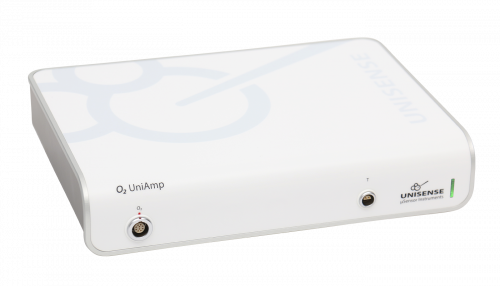
Economic amplifier portfolio for single analytes - O2, pH/mV, H2, N2O or H2S
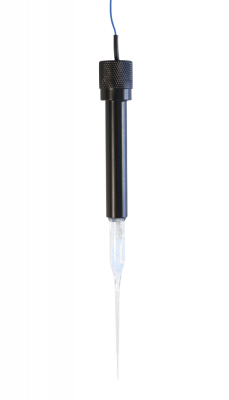
Reference electrode for pH or Redox microelectrodes

Freeware for sensor calibration and data logging. Choose Logger+ to add motor control.

Calibrate, control, program, analyze, and visualize your microsensor measurements
